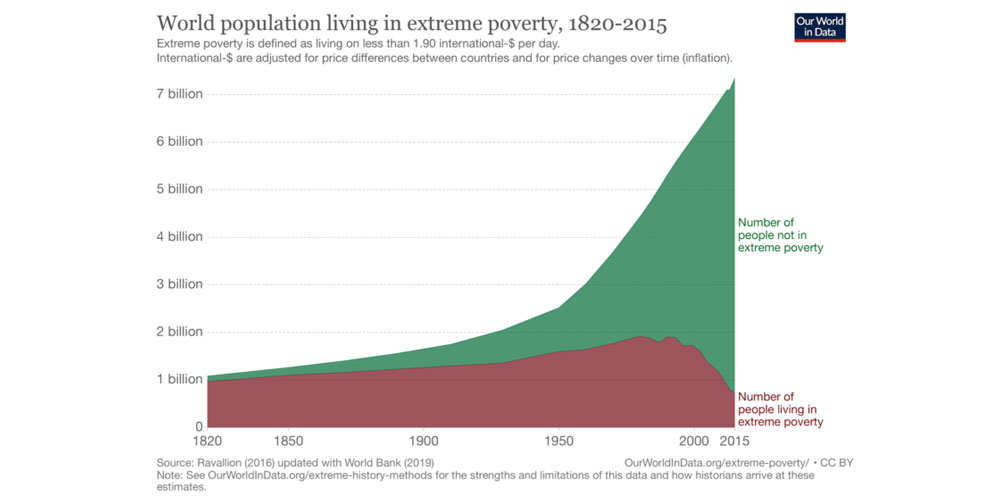
Private aid is great, but freedom is better.
Rachel Sharrett’s essay for the American Institute for Economic Research on the advantages of using private charity to help the disadvantaged is an interesting read, but the eye-catcher comes at the end. Explaining the chart used for the featured image of this post, Sharrett writes:
The bottom line is, aid has never been and will never be a lasting solution to poverty reduction. When used correctly, it can provide temporary relief for sudden changes of circumstance such as job loss or natural disaster—but that’s about it. The work of Isabella Graham and her daughter did much to alleviate the suffering of the widows and children within their care, but it did not provide any upward mobility to lift them out of poverty. This is because aid is like anesthesia: it temporarily lessens the sting of poverty but has no means to actually heal the source of infection. Only freedom can do that. In the 1950s, the percentage of people not living in poverty began to rise dramatically (as illustrated by Figure 5). This corresponds to a massive shift toward free markets and globalization also occurring during this time.
It is not possible to help everybody who needs assistance as well as they could help themselves and each other in the right environment.
In fact, I’d argue we err by drawing lines that ignore how good feeling and self-fulfillment are a form of currency. When people in a free market each create goods and services to benefit the others, that is a form of mutual aid.
The fact that cash may be the means of measuring relative value does not change the nature of the interaction. Relatively wealthy people procuring good feeling by paying healthy salaries to others for services and goods provided to third-parties is not obviously a more pure transaction than mutually beneficial exchanges of value among those third parties.
